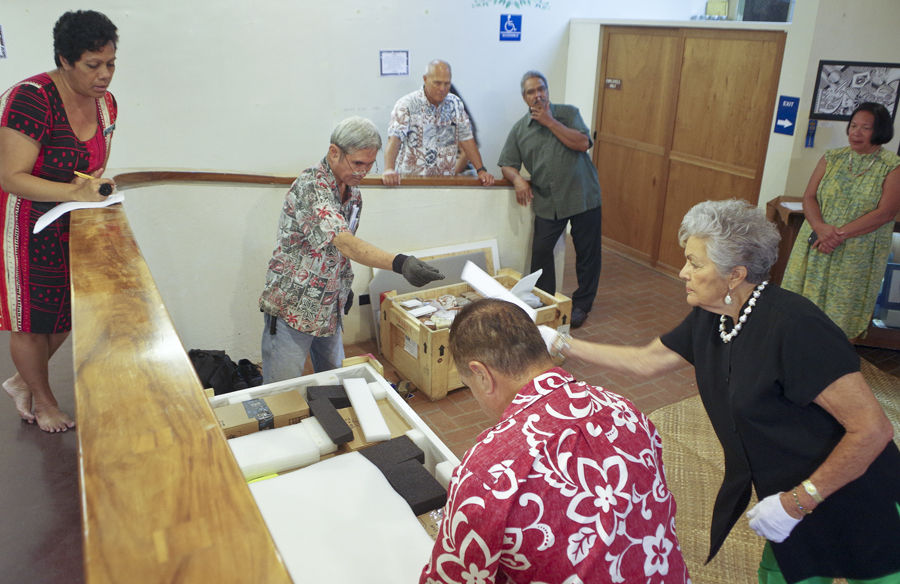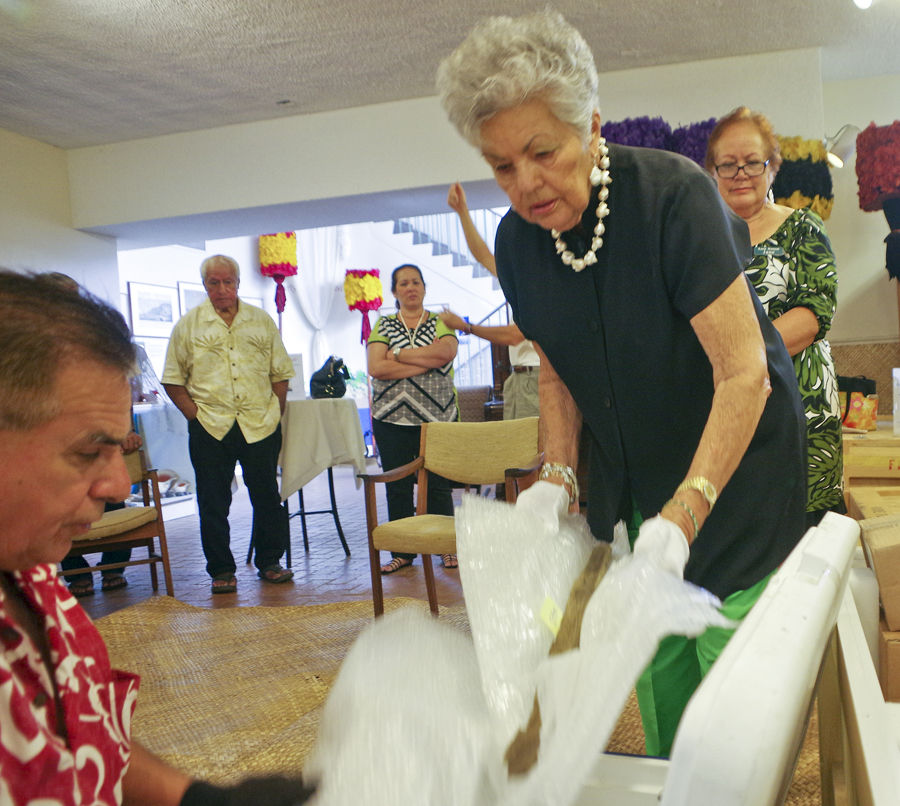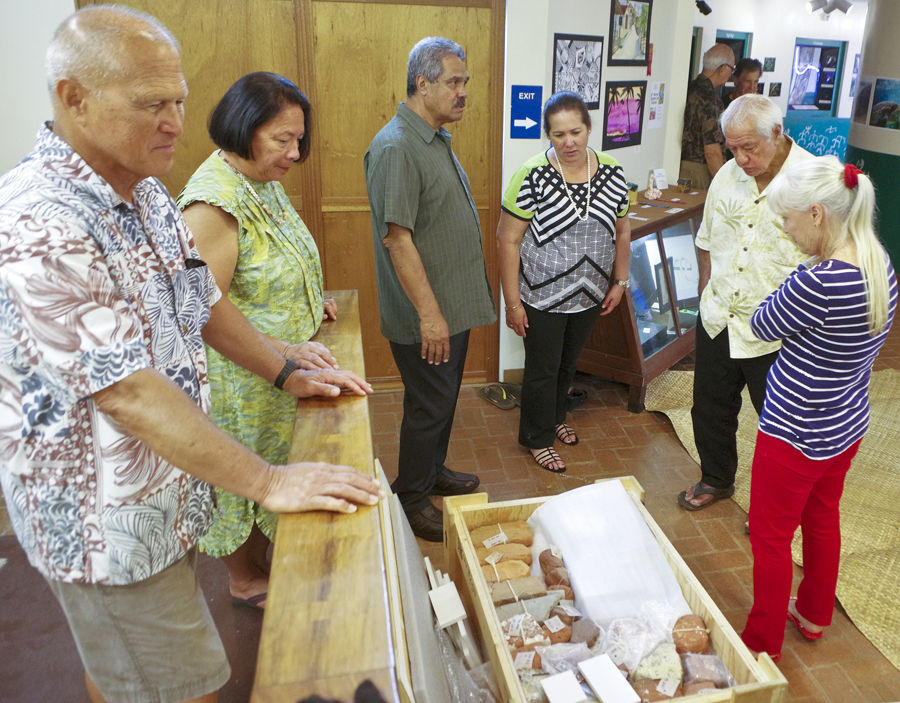LIHUE — Maryanne Kusaka was hoping to see an inscribed goblet. Instead, the first crate opened Wednesday at the Kauai Museum contained bricks. The first item unwrapped from the second crate wasn’t much better. “It’s a rock,” she said. But
LIHUE — Maryanne Kusaka was hoping to see an inscribed goblet.
Instead, the first crate opened Wednesday at the Kauai Museum contained bricks.
The first item unwrapped from the second crate wasn’t much better.
“It’s a rock,” she said.
But as more artifacts were unveiled from protective bubble wrap and boxes, including pieces of a table setting, cooking utensils and what looked like a brass button, guests watched intently.
“It’s a very exciting day,” said Kusaka, president of the Kauai Museum.
The museum on Wednesday opened two of four large crates of artifacts received from the Smithsonian Institution of National Museum of American History.
The antiquities, which went down with a ship almost 190 years ago, have a storied history.
Cleopatra’s Barge, a brigantine, was the second most popular ship in the American colonies before 1775. It was a two-masted sailing ship with square rigging manufactured in Salem, Massachusetts, in 1816 where she served as a merchant vessel until 1820 when she was traded to King Kamehameha II in exchange for $80,000 in sandalwood, states the Texas A&M University Center for Maritime Archaeology and Conservation website.
“The opulent yacht became the Royal yacht for King Kamehameha II, who named it “Haaheo o Hawaii,” or the Pride of Hawaii,” said Jane Gray, the Kauai Museum director. “The ship cost about $50,000 to build with about the same amount for luxury furnishings. The main cabin was 19 feet by 20 feet with mahogany panels inlaid with other decorative wood. Furniture was covered in red velvet with gold lace, and the kitchen included custom silver, china and formal glassware.”
The Haaheo o Hawaii ran aground on a reef near the mouth of the Waioli River in Hanalei on April 6, 1824. Recently, one theory on why the ship was in such a remote area was that it was on a scouting expedition investigating plans for a rumored rebellion, which would take place by King Kaumualii’s son Humehume.
Following the wreck, a second of the hull washed ashore on Dec. 30, 1844, which was already damaged by shipworms. Two cannons were recovered in 1857.
Paul Forsythe Johnston of the Smithsonian’s Institute of Natural American History applied for the first underwater archaeological permits issued by the state of Hawaii in January 1994. Capt. Richard Rogers volunteered his research vessel, Pilialoha outfitted with a proton magnetometer and in July 1995, the search for artifacts from the ship started.
After several years, the ship’s remains were finally located, excavated and many artifacts were recovered. During the Smithsonian’s exploration, a section of the ship’s stern was uncovered, documented, and re-buried.
Samson Mahuiki, a North Shore resident, remembers seeing pieces of the Haaheo during his diving and fishing trips to Hanalei Bay. He also watched parts of the excavation.
“They started at the right time,” said Dr. Richard Goodale, a museum trustee. “My father always said it was all right to park the boat at Hanalei after Memorial Day, and after Labor Day, the boat needs to be moved out before the winter surf comes in.”
The Smithsonian recently shipped some of the artifacts, including the bricks used for ballast, to the Kauai Museum. Those on hand for the unveiling were pleased.
”Return it to where it really belongs,” Kusaka said.
The other crates will be opened and the remaining artifacts inside examined and eventually displayed to the public.
“The Kauai Museum got the services of Rev. Tom Takahashi to bless the crates and make sure everything was pono,” said Chucky Boy Chock. “Once the crates are unpacked and the contents catalogued, some of the pieces will be put out for display and Rev. Takahashi will perform another blessing.”




